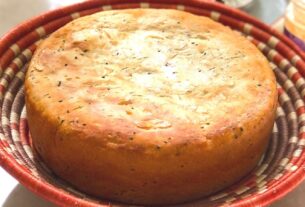In his commentary on the Torah, the medieval Jewish thinker Nahmanides (a.k.a. Ramban) refers to the types of work permitted on festivals as melekhet hana’ah, “work of pleasure.” These are the actions which are forbidden on Shabbat but permitted on festivals because they offer more opportunity for good, fresh food which will enhance the pleasure of the celebration. But just how far does melekhet hana’ah extend?
Though our page does not use the term melekhet hana’ah (in fact, it is not found in the Talmud), it is essentially the limits of this principle that are the main question of today’s daf.
The first mishnah presents a debate between Shammai and Hillel:
Beit Shammai say: One may not carry a child, nor a lulav nor a Torah scroll into the public domain on a festival.
Beit Hillel permit it.
Carrying in the public domain is one of the thornier prohibitions on Shabbat and festivals — so complex that an entire tractate, Eruvin, is devoted to it. In this tractate, we have already learned that the rule is relaxed a bit on festivals — one may carry in the public domain for the purposes of preparing food. However, Beit Shammai forbade carrying on a festival for any other purpose, including such plausible candidates as items used in the fulfillment of other commandments. Therefore, according to Shammai, on a festival one may not carry a baby in order to circumcise him, a lulav to wave on Sukkot or a Torah scroll for a public reading. If there were any exceptions to carrying in the public domain on a festival, these would be them!
While it is clear that Beit Shammai forbade all forms of carrying that are not strictly related to food preparation, it is less clear just how far the permissiveness of Beit Hillel extends. The Gemara raises the possibility that Beit Hillel actually allow all forms of carrying on a festival:
Since carrying was permitted for the requirements (of food preparation), it was also permitted not for these requirements.
Some commentaries understand this to mean that once a category of work, such as carrying, is partially permitted in order to prepare food on festivals, the entire category becomes permitted and we can carry anything.
Rav Yosef strongly disagrees with this possibility. The mishnah, he argues, intentionally chose scenarios in which the objects serve a specific ritual purpose. If Beit Hillel permitted all forms of carrying, then the example objects in the mishnah would have been rocks and other similarly useless objects.Instead, says Rav Yosef, the leniency of Beit Hillel, that we can carry objects “not for these requirements,” should be understood as follows: Not only are we allowed to carry objects that are needed for food preparation on festivals, but also objects that serve the broader purpose of enjoying the festival — in the same spirit as the Ramban who speaks of melekhet hana’ah, work of pleasure.
This reading provides us with a greater understanding of the underlying principle used to determine which actions are permitted on festivals as well as insight into the concept of hana’ah, pleasure, in a religious context. The mishnah conceived of two great sources of pleasure — food and the performance of commandments. Perhaps the mishnah intended to also provide a subtle message that pleasure on a festival is achieved through a combination of physical and spiritual fulfillment.
Read all of Beitzah 12 on Sefaria.
This piece originally appeared in a My Jewish Learning Daf Yomi email newsletter sent on September 12th, 2021. If you are interested in receiving the newsletter, sign up here.
The post Beitzah 12 appeared first on My Jewish Learning.




